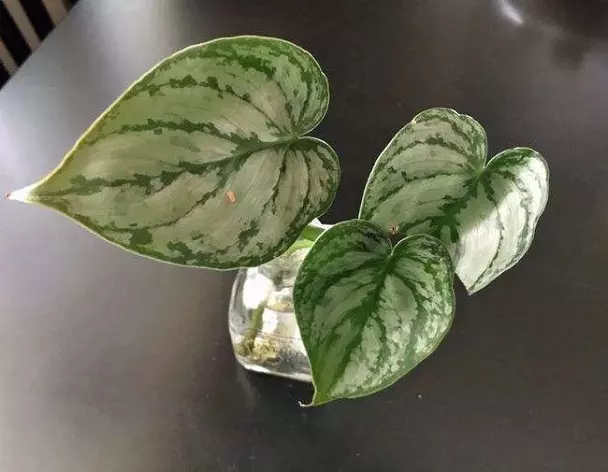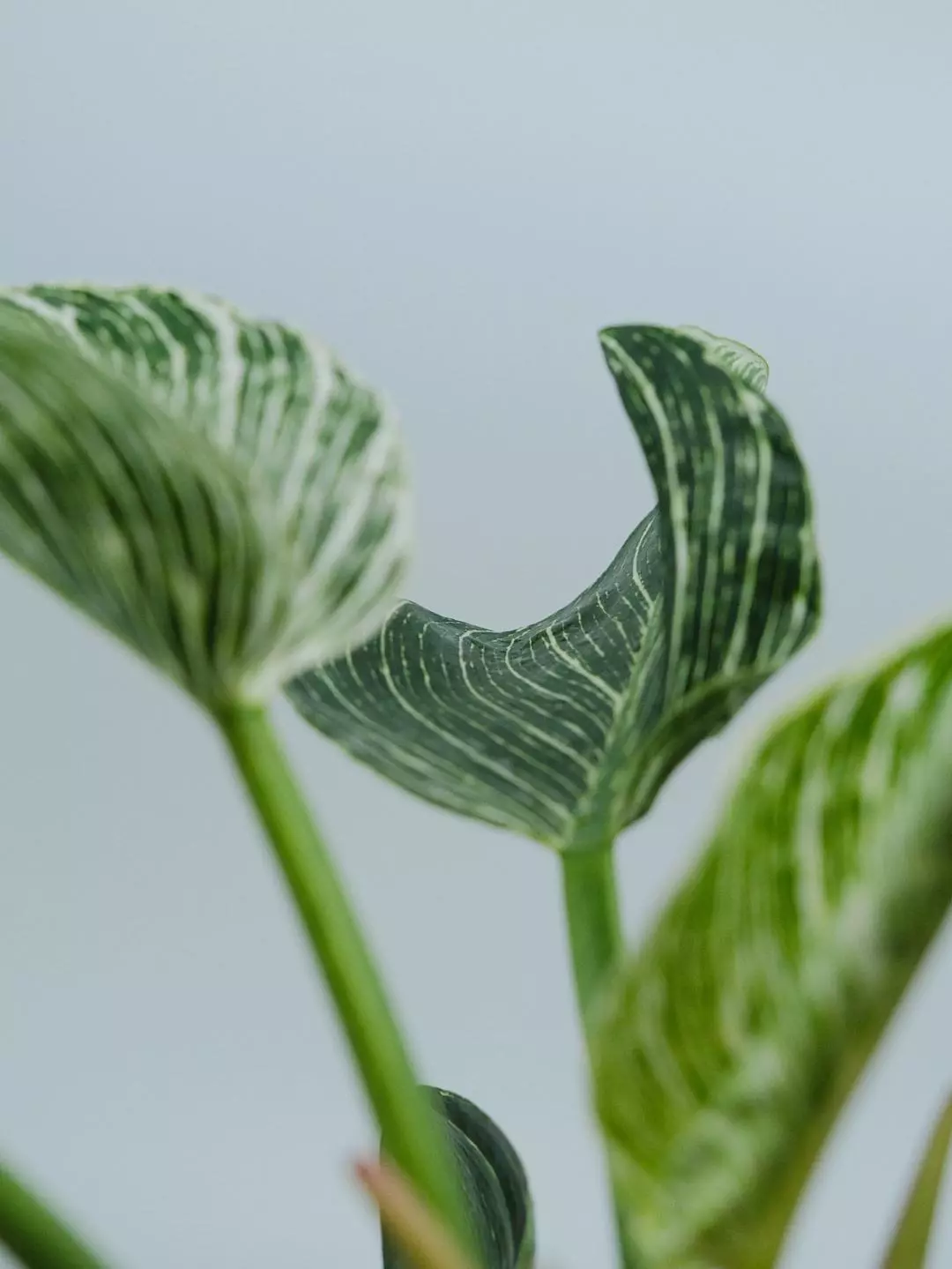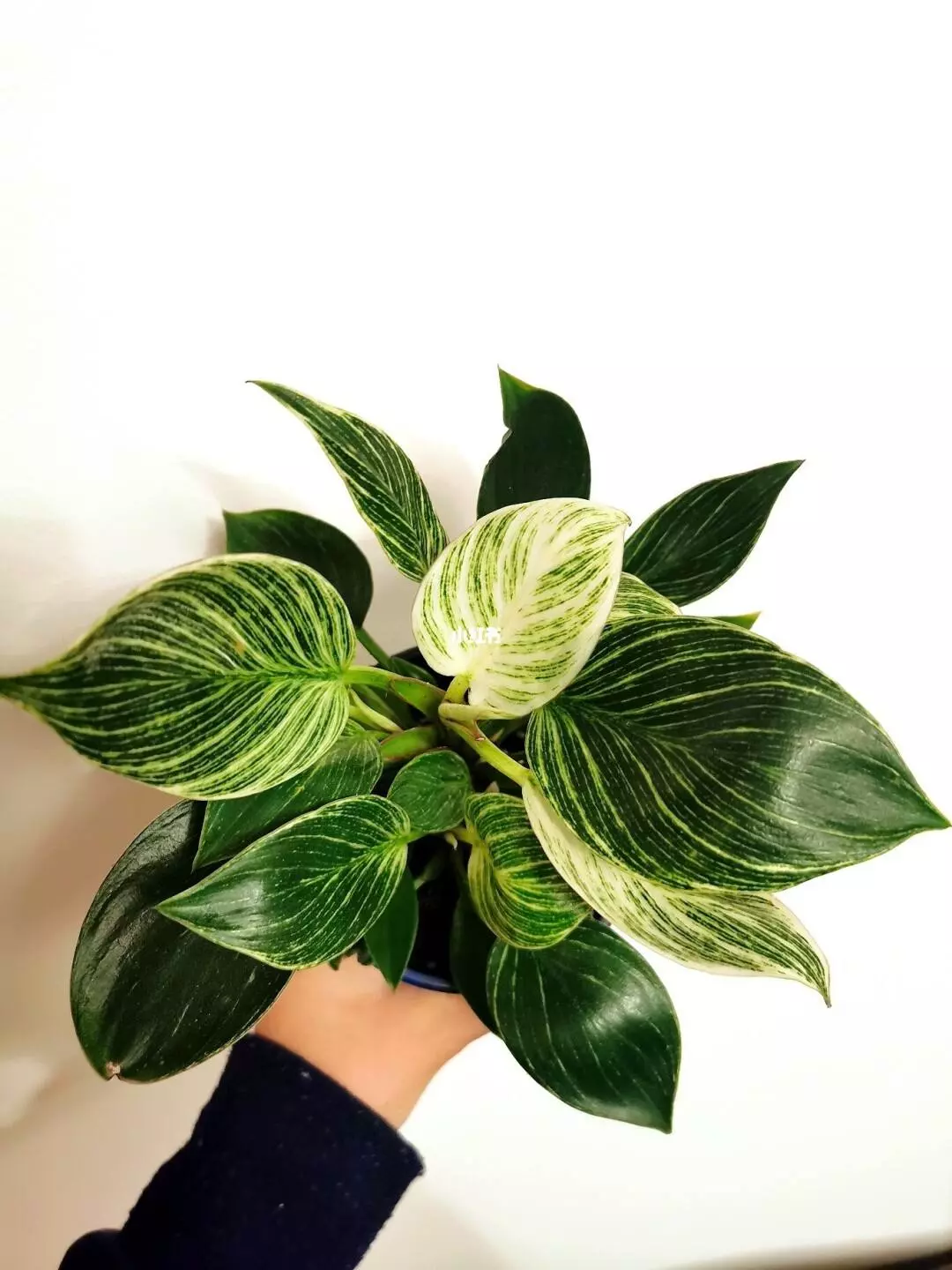How To Save My Philodendron Birkin Yellow Leaves?
Written by Ivy
Dec 01 2022

Normal Yellow Leaves
If you find Philodendron Birkin yellow leaves on the old leaf at the bottom of the rhizome, it is likely to be caused by normal metabolism, that is, the leaf is too old, and it will naturally turn yellow and dry. In this case, just remove and discard these philodendron birkin yellow leaves in time.
Overwatering
For potted plants maintained indoors, most of Philodendron birkin yellow leaves are caused by excessive water. After buying plants, some novices are very diligent and water the plants as soon as they are free. This will lead to Philodendron Birkin yellow leaves. We should reasonably control the frequency and amount of watering Philodendron Birkin yellow leaves, and pay attention to water quality problems, which may lead to Philodendron Birkin yellow leaves. We'd better water Philodendron Birkin yellow leaves once a week.Read More:
How To Water Philodendron Birkin?
Incorrect Lighting
The plants maintained indoors have poor ventilation and light transmission, and the lack of light will consume less water, resulting in frequent wetting of the soil and even ponding, and the root system of the plants will be asphyxiated by hypoxia, which will eventually lead to Philodendron Birkin yellow leaves. We should move Philodendron Birkin yellow leaves to a place with ventilation and light transmission, dry the water in the soil in time, and keep the basin soil dry and watered thoroughly in the later stage.Read More:
How Much Light Does Philodendron Birkin Need?
Low Temperature
The leaves of Philodendron Birkin turn yellow, which may be related to temperature. If the temperature in the growth environment is too high or too low, it will affect the normal growth of Philodendron Birkin, causing yellow and scorched leaves. During the growth of Philodendron Birkin, the temperature should be maintained, the ventilation and cooling should be strengthened in summer, and the warmth should be kept in winter.Nutrient Loss
Nutrient loss shows that the color of young leaves becomes light, yellow or light green, while the old leaves are normal or gradually turn from green to yellow. Check the basin soil. If there is dry knot, replace the soil, apply thin fertilizer frequently at ordinary times, and pour some alum water in time. The basin soil is short of nitrogen, the leaves are small, the leaf color is light yellow, the lower leaves are yellow, the whole plant gradually loses its green, and the lower part is more yellow and light; The basin soil is lack of phosphorus, the leaves are curly, the leaf color is dark green, and the veins of the lower leaves are yellowing; The basin soil is lack of potassium, the lower leaf edge is brown and easy to fall down; The basin soil is lack of magnesium, from bottom to top, the edge and middle of the leaf lose green and turn white; The basin soil is short of iron, scorched brown spots and dry.The application of water and fertilizer is very important for the growth of Philodendron Birkin. If watering and fertilization are not timely, it may affect the growth and lead to Philodendron Birkin yellow leaves. If there is too much water and fertilizer, it will burden the roots and cause root rot, resulting in yellow leaves. Water and fertilize reasonably according to the growth of Philodendron Birkin. If there is too much watering, ventilation needs to be strengthened. If there is too much fertilization, it needs to be watered and diluted. Rotten roots should be treated in time.Low Humidity
If plants grow in a dry environment for a long time, it will also lead to Philodendron Birkin yellow leaves. We can spray water on Philodendron Birkin leaves to increase humidity.

Clay Soil
If Philodendron Birkin grows in hardened, airtight and viscous soil, it will also cause the roots to fail to absorb water and fertilizer normally, resulting in yellow leaves. If the air permeability of the soil becomes poor, the plants cannot breathe normally. The first case is Philodendron Birkin yellow leaves. If it is not improved in time, the leaves of the whole plant will turn yellow, and there will be rotten roots and stems, and finally the roots and stems at the bottom will stink. We should regularly change the soil for Philodendron Birkin, provide loose, breathable and fertile sandy soil, and loosen the soil regularly to keep it loose.Read More:
What Is The Best Soil For Philodendron Birkin?
Pest Infestation
In the planting process, if the maintenance method is wrong, diseases and pests may appear, resulting in Philodendron Birkin yellow leaves. We need to cut off the withered and yellow leaves and then spray drugs to treat the symptoms. For potted plants, too many fallen leaves should not be left on the table, otherwise the soil surface will be often wet, which is easy to breed mold or other fungal diseases.Read More:
- How To Propagate Philodendron Birkin?
- Is Philodendron Birkin Rare?
- Is Philodendron Birkin Poisonous To Pets?
- Philodendron Birkin Care & Propagation Guide
Conclusion for Yellow Leaves Philodendron Birkin
The Philodendron Birkin's leaves can turn yellow for a variety of reasons, as you can see. Finding the source of the issue is the first step in restoring your plant's health. Overwatering or underwatering, inadequate lighting or humidity, pests, and nutritional deficiencies are the most frequent causes of leaf discoloration in philodendrons.
FAQs of Philodendron Birkin Yellowing Leaves
When Should I Repot My Philodendron Birkin?
Ideally, Philodendron birkin should be repotted every year. Repotting Philodendron birkin is best done in the spring because this is the time of year when the plant will grow the fastest.Why My Philodendron Birkin Leaves Curling
Leaves of Philodendron Birkin will curl if the plant is cold, or excessively dry from constant air flow. Due to their tropical origins, philodendrons can tolerate higher levels of humidity. By frequently misting the plant's leaves, employing a pebble tray, or placing a humidifier close by, you can raise the humidity level in the area.
Philodendron Birkin Leaves Falling Off
Losing leaves on your Philodendron Birkin is completely normal and doesn't suggest any sort of issue. In actuality, it is a sign of healthy plant maturation. As they age naturally, Philodendron Birkin plants occasionally lose a lower leaf.
Philodendron Birkin Leaves Turning Yellow and Brown
The most common cause of yellowing and brown leaves among Philodendron plants is improper soil moisture–in particular, overwatering. Only mist your Philodendron when the top quarter of the soil is dry. The soil must be kept moist but not drenched.
Should I Trim Away the Yellow Leaves on My Philodendron Birkin?
Really, this is entirely up to you. If the entire leaf has turned yellow then we'd advise you trim it away, this will help to encourage new growth in the plant and stop it wasting energy on trying to maintain the yellowed leaves.
Do Yellow Leaves Mean I Have Overwatered My Philodendron Birkin?
Sadly, yellowing Philodendron Birkin plants typically exhibit this. However, if you are certain that this isn't the case, we strongly advise you to investigate the lighting conditions as yellow leaves can also be brought on by excessive direct sunlight.
How Often Does a Philodendron Birkin Need to Be Watered?
Being in a humid environment is what a Philodendron Birkin, a thirsty plant, loves. Water it once a week and it will be a content plant because it should be in soil that is moist the majority of the time.Why Are the Leaves Philodendron Birkin White?
Your Philodendron Birkin has entirely white leaves because they are brand-new leaves. Over time, its leaves get greener. From being entirely white to being striped with white, and from being entirely green to being entirely dark green.Latest Updated
- Benefits of Bugleweed - 7 Science-backed Health Benefits
- Bugleweed Dangers & Side Effects - Is It Poisonous?
- How to Plant Evergreen Trees - What You Should Know
- When to Plant Evergreens - Grow Guide for Evergreen Trees
- 12 Wonderful Evergreen Shrubs for Your Garden
- 12 Popular Evergreen Plants with Pictures for Beginners
- When And How To Prune A Lilac Bush Like a Pro
- How to Grow & Care for Lilac Vine (Hardenbergia Violacea)
- Japanese Lilac Tree (Syringa Reticulata) Care & Propagation Guide
- Shumard Oak Pros and Cons - What to Know
Popular Articles
- Winter maintenance of Antirrhinum Majus
- How to Grow Terminalia Mantaly Tree
- How to Grow and Care for Crossostephium Chinense
- How to grow Antirrhinum Majus in spring
- Peristeria Elata (Dove Orchid) Profile: Info & Care Guide
- Underwatered Snake Plant (Sansevieria Trifasciata) - Signs And How To Fix
- How to Care for Brazilian Jasmine Plant (Mandevilla Sanderi)
- How to Grow & Care for Graptopetalum Purple Delight in Summer
- Rosa Chinensis (China Rose): Plant Growing & Care Tips
- How to Care for Baby Sun Rose (Aptenia Cordifolia)